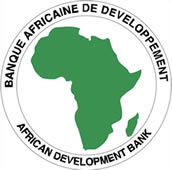In recent times, mango and ostrich commercial farms are also gaining footholds in the northern zone. The coastal savannah is known for rice, maize, cassava, vegetables, sugar cane, mangos and coconut, as well as livestock. Sweet potato and soybean crops thrive in this area under irrigation. The lower part of this zone is drained by River Volta. Together with other streams and lagoons, these water resources present opportunities for fish farming or aquaculture. In the forest zone where there is abundant rainfall, cocoa, coffee, oil palm, cashew, and rubber as well as plantain, banana and citrus crops are grown.
In Ghana the forestry sector accounted for 4.2 percent of GDP in 1990; timber was the country's third largest foreign exchange earner. Since 1983 forestry has benefited from more than US$120 million in investments and has undergone substantial changes, resulting in doubled earnings between 1985 and 1990. In 1993 timber and wood products earnings totaled US$140 million against a targeted level of US$130 million. Between January and November 1994, exports amounted to 919,000 tons and earned US$212 million. Until the 1980s, forestry production suffered because of the overvalued cedi and deterioration of the transportation infrastructure.
Investors are therefore encouraged to invest in Wood and Non-Timber Forest Products (NTFP) based Small-Medium Enterprises (SMEs)and plantations Establishment of Farm Forest Wood Lots, Establishment of Pulp Paper and Panel Industries
Establishment of Plantation Based Construction Grade Timber and Fiber Supply
Provision of tree seedlings for plantation species e.g. teak.
Information available shows that there is high demand for medicinal plants from Ghana. Scientific information available indicates most parts of Ghana are suitable for the cultivation of various medicinal plants. Particular plants like Cola Nitida locally known as "Bese", Alchornea Cordifolia (Ogyama), Griffonia Simplicifolia (Kagya), are high in demand by both international and local markets. Investor are entreated to consider all these areas.
REFERENCES:
https://www.kpmg.com/GH/en/Documents/Doing%20Business%20in%20Ghana%202015.pdf
Ghana Investment Promotion center and Wikipedia




































